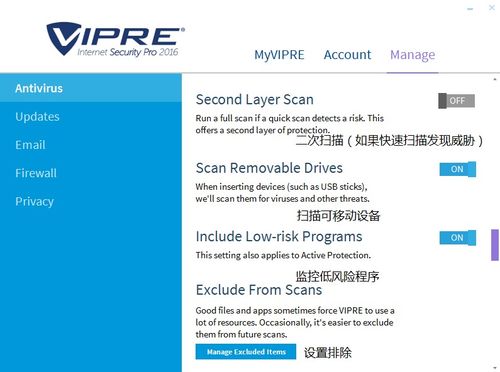
Software security is a critical aspect of the digital age, ensuring that software applications are protected against potential threats and vulnerabilities. In this article, we will explore the various terms and concepts related to software security in English, providing a comprehensive guide for those interested in understanding this vital field.

Software security, often referred to as cybersecurity, involves the protection of software applications from unauthorized access, data breaches, and other malicious activities. It encompasses a range of measures, including encryption, authentication, and intrusion detection systems, to ensure the integrity, confidentiality, and availability of software and its data.

Here are some essential terms related to software security:
Malware: Short for malicious software, it refers to any software designed to damage, disrupt, or gain unauthorized access to computer systems.
Phishing: A type of cyber attack where attackers attempt to steal sensitive information such as login credentials by posing as a trustworthy entity.
DDoS Attack: Stands for Distributed Denial of Service, where multiple compromised systems are used to flood a target system or network, rendering it unusable.
Firewall: A network security device that monitors and controls incoming and outgoing network traffic based on predetermined security rules.
Encryption: The process of converting data into a coded format to prevent unauthorized access.
Authentication: The process of verifying the identity of a user or system before granting access to protected resources.

Several measures are employed to enhance software security:
Secure Coding Practices: Developers follow secure coding practices to minimize vulnerabilities in the software development process.
Regular Updates and Patch Management: Keeping software up-to-date with the latest security patches is crucial to protect against known vulnerabilities.
Access Control: Implementing strong access control mechanisms ensures that only authorized users can access sensitive data and resources.
Security Audits and Penetration Testing: Regularly conducting security audits and penetration testing helps identify and fix vulnerabilities before they can be exploited.

Here are some best practices for ensuring software security:
Use Strong Passwords: Encourage users to create strong, unique passwords and implement multi-factor authentication where possible.
Keep Software Updated: Regularly update all software applications, including operating systems, to patch security vulnerabilities.
Backup Data Regularly: Regularly backup important data to prevent data loss in the event of a cyber attack.
Train Employees: Educate employees about cybersecurity best practices and the importance of recognizing potential threats.

Software security is a complex and ever-evolving field, with new threats and vulnerabilities emerging regularly. By understanding the key terms, implementing best practices, and staying informed about the latest developments, organizations and individuals can better protect their software applications and data from potential threats.

Software Security, Cybersecurity, Malware, Phishing, DDoS Attack, Firewall, Encryption, Authentication, Secure Coding Practices, Access Control, Best Practices